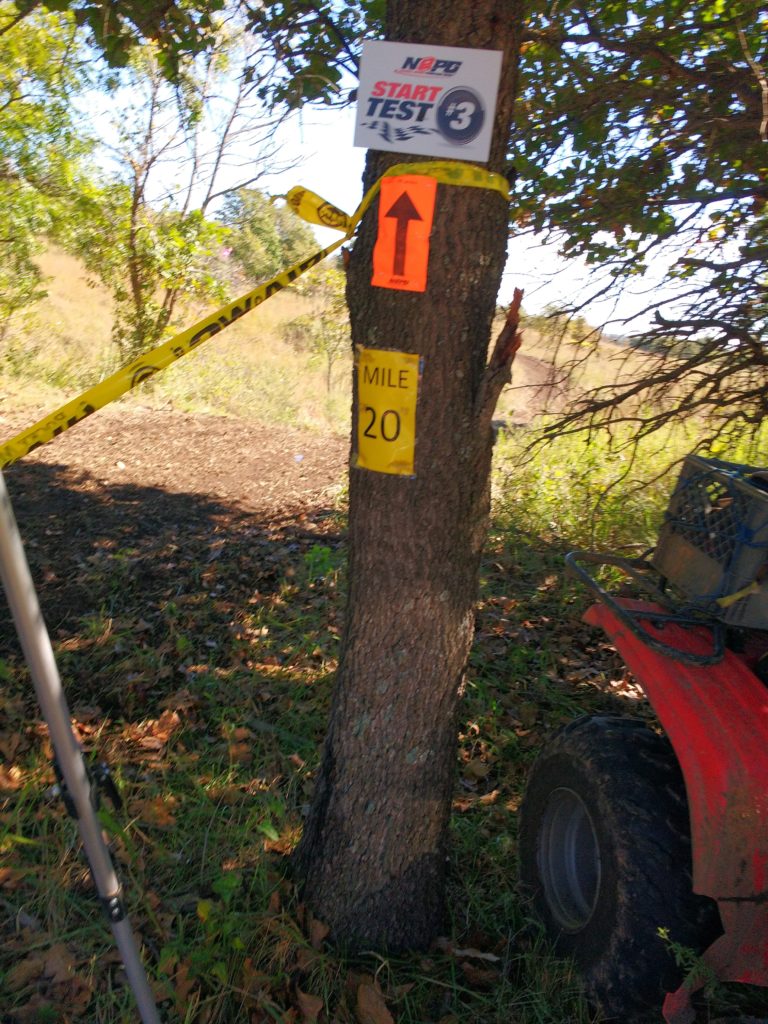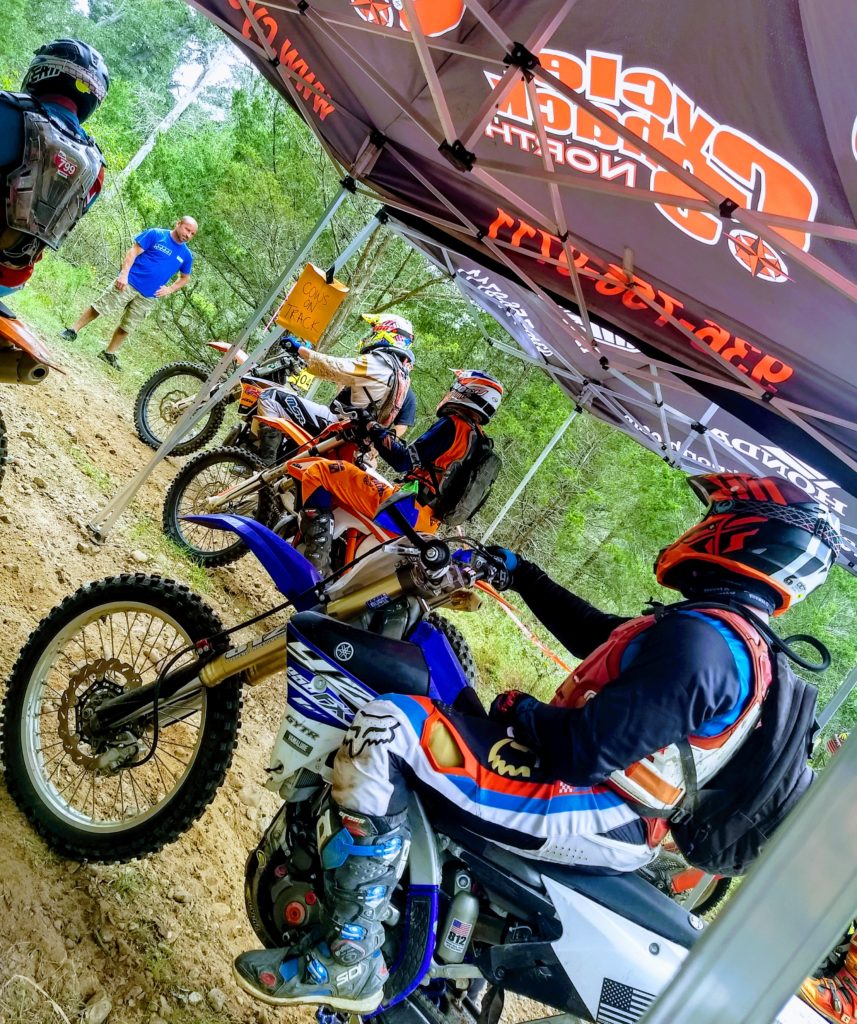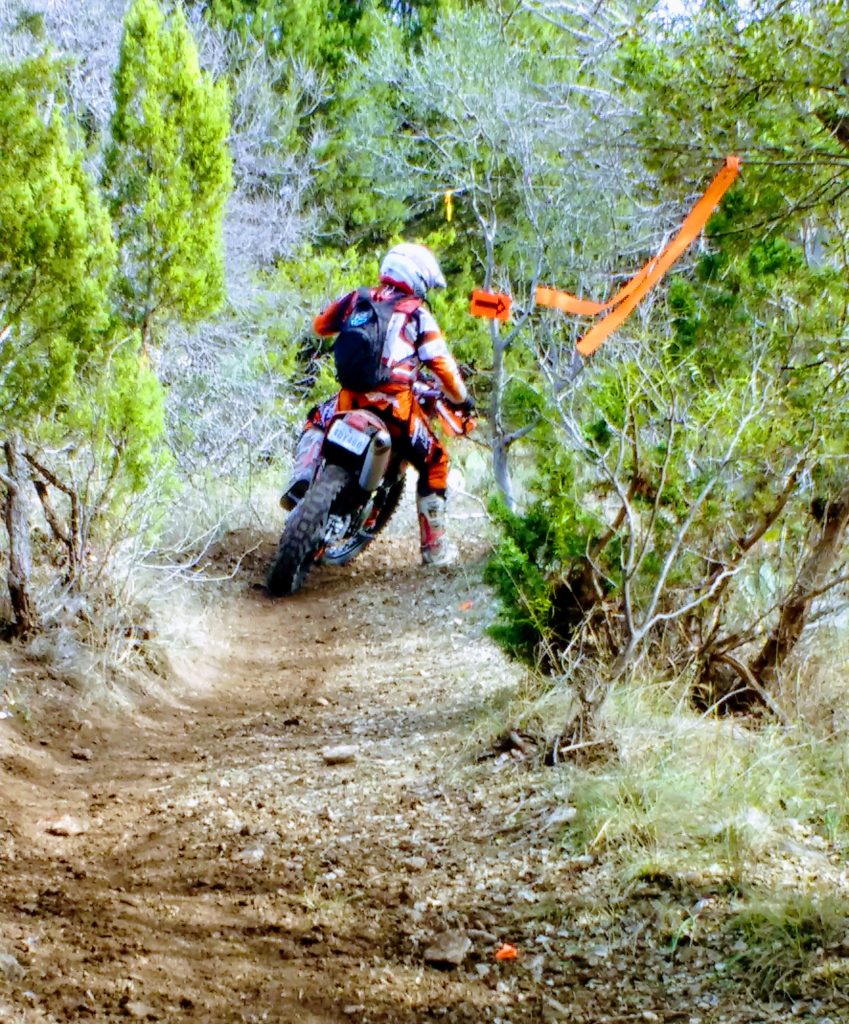Through the Gears: Dirt Bike Enduros
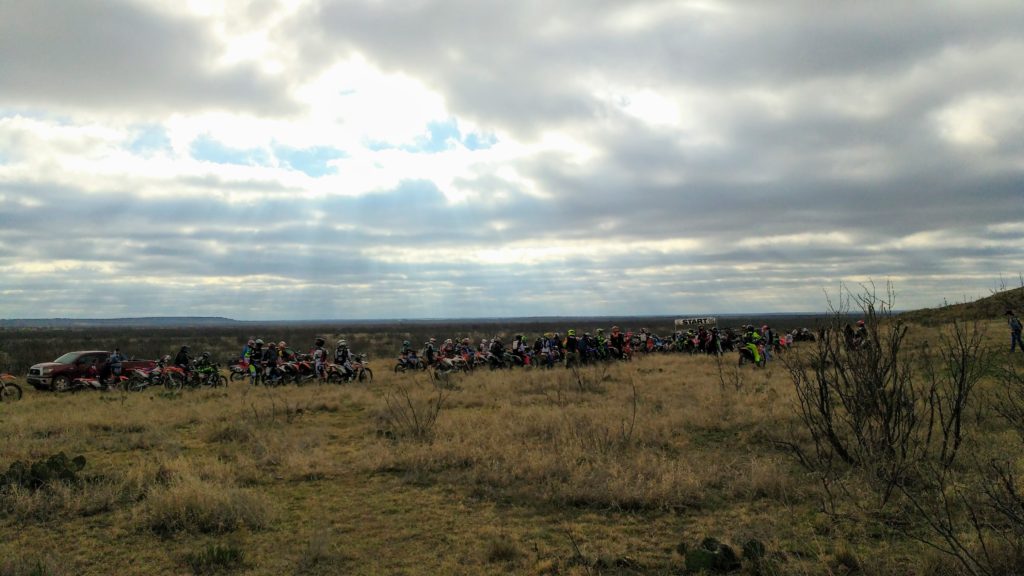
I’ve completed many different races, and I’ve spectated many races, but when my husband started racing dirt bike enduros we had a lot to learn. Many get into racing because they know someone doing it, but if you don’t maybe this can shed some light. In the past three years, we’ve had a blast traveling from middle-of-nowhereville West Texas to Oklahoma to Colorado. But no matter how demanding each race is, it felt difficult to just get started in the sport. Hopefully I can share some helpful information, from a racer and spectator’s perspective, to get you from casual rider to podium killer. Okay, okay, maybe not the podium part, but as I tell my husband, having fun is practically a win.
Getting Started
Probably the most intimidating part to any sport is transitioning from rider to racer. But if you are already into dirt biking then you are used to being challenged, go ahead – take the leap! If you want to get into dirt bike riding for racing or just for fun, send an email here for lessons info.
Before the first race, I had a million questions. TSCEC, or Texas State Championship Enduro Circuit, is Texas’ enduro series which hosts a number of races each year. But since we are usually driving many hours to get to different race sites anyway, we also went to a RMEC race, which is the Colorado circuit, and Blackjack, out of Oklahoma. The organizations are volunteer run, and those volunteers do an amazing job organizing and maintaining the safety of the racers on trails that may cover 100 miles.
Most of those race-day questions though may not be answered. As a racer, I’m used to knowing the route, terrain, and elevation changes. For these races you may only get the mileage, because part of the challenge is being able to adapt. If the mileage seems daunting, it is broken up into tests with a short rest time of 5-10 minutes between each depending on when you finished the last test. It’s still tough but it’s not full throttle the whole time. Racers are divided into classes based on ability. AA and A being the top classes and C being the jumping off point for newer racers. C class riders usually have a shortened version of the A/B tests, called the “short course”, or “super-short course” for the younger racers. Classes are then broken up further based on age or your bike’s engine size.
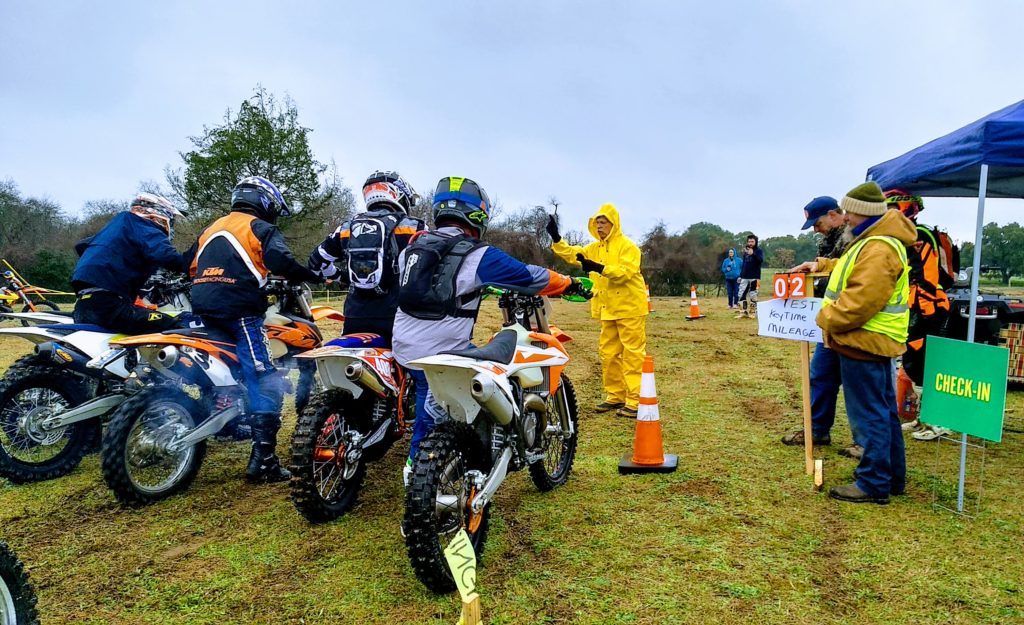
Race Day
Once you’ve put time and mileage on the bike and are ready for your first race, what’s race day like? Every race day will start with a rider’s meeting about an hour before the official race time start. However, based on your number you’ll start that many minutes after the official start, as riders are released in rows every minute. So, if your race number is 12, the rider’s meeting will be at 8am, race starts at 9am, and you’ll start on your first test at 9:12am. From there you’ll follow the marked course until the end of that test, where you’ll line up again just like the first test. The marker tape and arrows are your life line to stay on course, and more info on that is typically given during the riders’s meeting. There may also be a designated gas stop break, to allow refueling of your bike and your body.
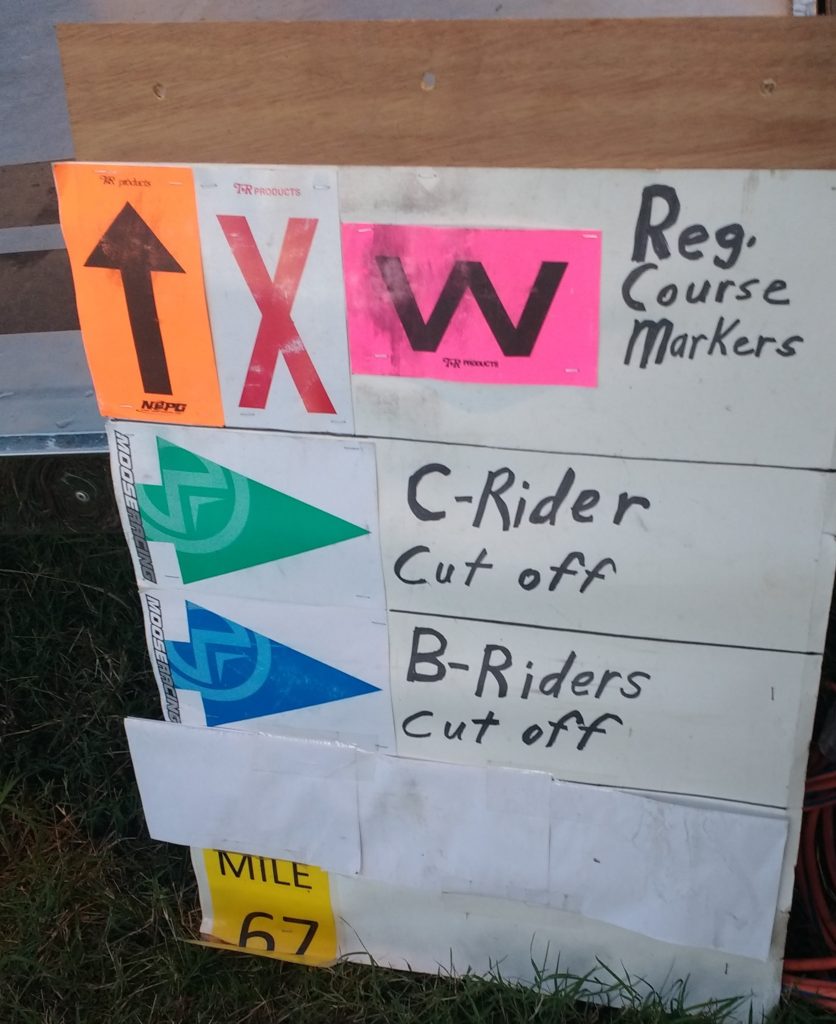
If you are feeling nervous, don’t worry you won’t be alone. Everyone had their first race once, and although there’s sadly few women racers, there are men of all ages and abilities. And the camaraderie is as good as any other trail sports I know. Eventually, after 4, 5, 6, or even 7 hours you’ll finally finish! Time to eat!
Spectating
Enduros are mostly not spectator-friendly. There may be a few spots where you can see your racer at the start or end of a test. But most of the hours I read or hike around. Most races are held at private ranches, where there’s probably no cell coverage. There also may or may not be food trucks, so always take snacks. The race may also be quite a few miles from any town. Plan to stay at the race site for many hours, and plan to not be able to get food immediately after the race, unless you traveled in an RV. I mostly go to provide my husband some company on the road trip, since he’s done the same for me.
Tips:
- Bring your own food and drinks for racers and spectators.
- Bring a towel.
- Wear boots for the cactus, mud, mesquite needles etc.
- Bring cash for a race shirt, which are usually provided by the sponsoring area riding club.
- Check the TSCEC website for the race schedule. About a month before each race a flyer will be posted with the race’s mileage.
- During training, practice being on the bike for 5 hours.
